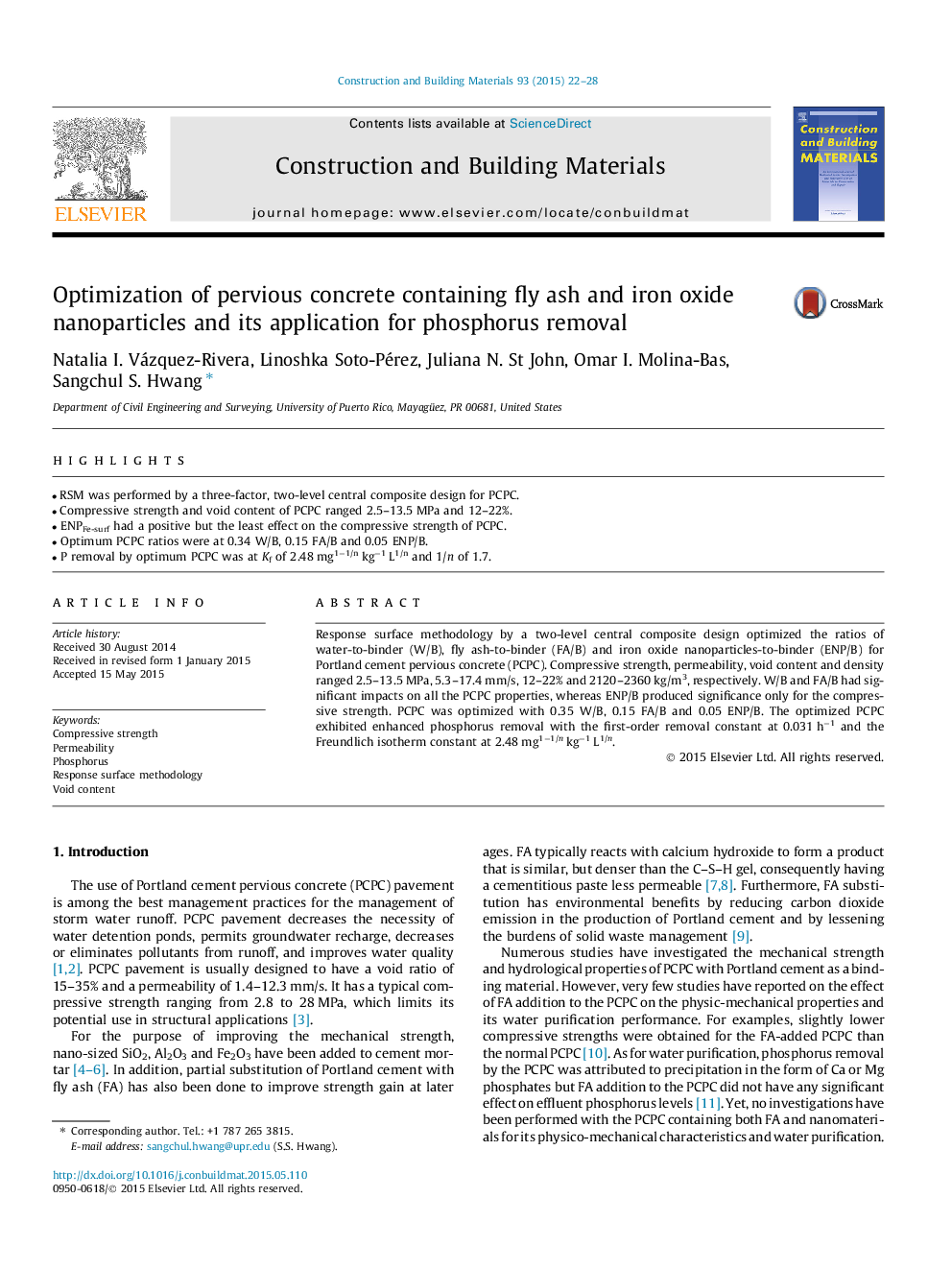| Article ID | Journal | Published Year | Pages | File Type |
|---|---|---|---|---|
| 6720014 | Construction and Building Materials | 2015 | 7 Pages |
Abstract
Response surface methodology by a two-level central composite design optimized the ratios of water-to-binder (W/B), fly ash-to-binder (FA/B) and iron oxide nanoparticles-to-binder (ENP/B) for Portland cement pervious concrete (PCPC). Compressive strength, permeability, void content and density ranged 2.5-13.5 MPa, 5.3-17.4 mm/s, 12-22% and 2120-2360 kg/m3, respectively. W/B and FA/B had significant impacts on all the PCPC properties, whereas ENP/B produced significance only for the compressive strength. PCPC was optimized with 0.35 W/B, 0.15 FA/B and 0.05 ENP/B. The optimized PCPC exhibited enhanced phosphorus removal with the first-order removal constant at 0.031 hâ1 and the Freundlich isotherm constant at 2.48 mg1â1/n kgâ1 L1/n.
Related Topics
Physical Sciences and Engineering
Engineering
Civil and Structural Engineering
Authors
Natalia I. Vázquez-Rivera, Linoshka Soto-Pérez, Juliana N. St John, Omar I. Molina-Bas, Sangchul S. Hwang,
